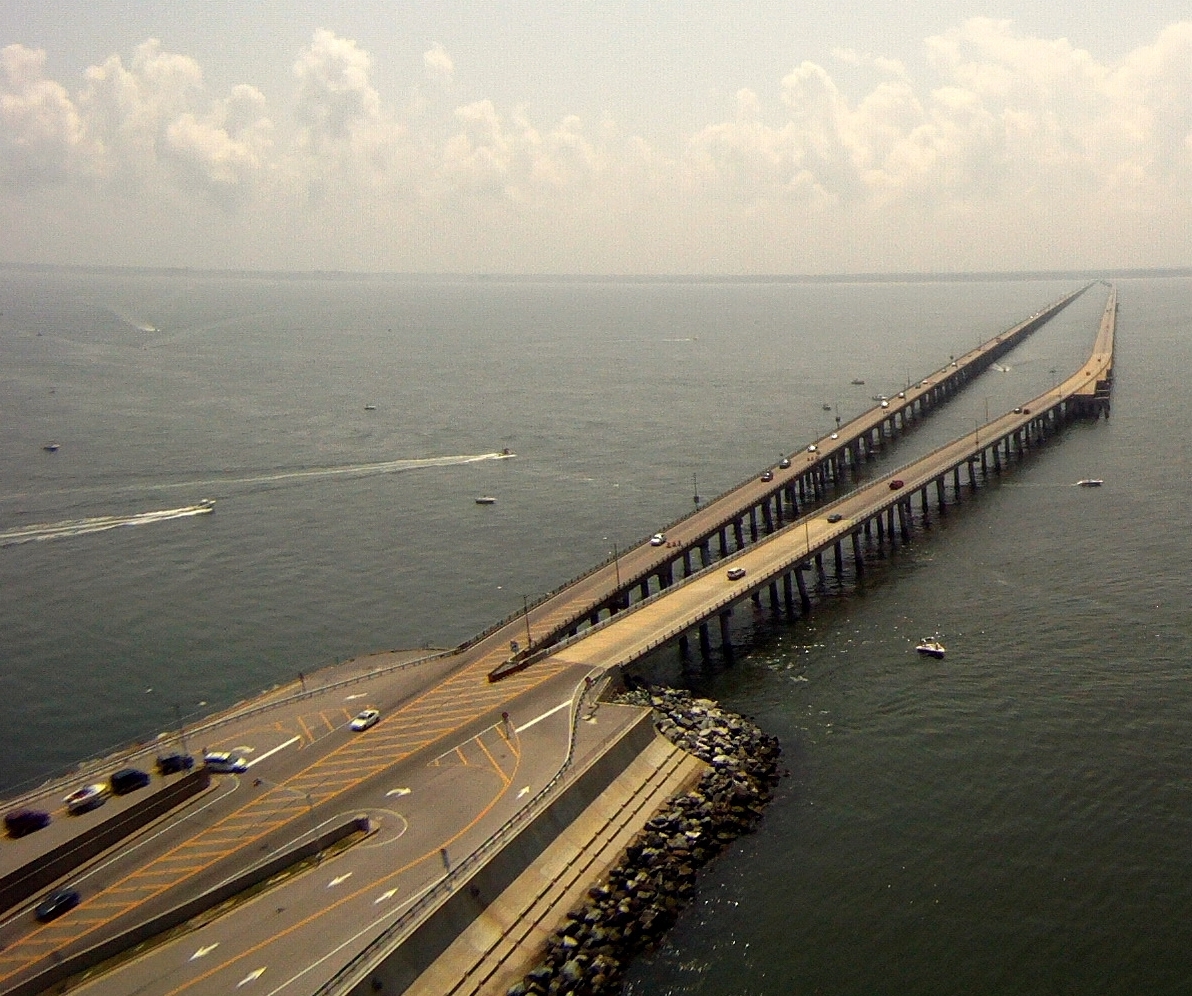
This week in civil engineering history: After three and a half years of construction, the Chesapeake Bay Bridge-Tunnel opens to traffic, connecting Virginia Beach and Cape Charles, Virginia, April 15, 1964.
As the Virginia colony was settled and grew from the early 1600s, maritime transportation was the primary mode of passage between the mainland and the Delmarva peninsula, respectively the western and eastern shores of Chesapeake Bay. In 1954, the Virginia General Assembly created the Chesapeake Bay Ferry Commission with a charge to improve ferry service between the mainland and the eastern shore. Two years later the Assembly authorized the commission to perform a study for a fixed crossing.
Studies concluded that a vehicle crossing was feasible. The selected route at the mouth of Chesapeake Bay crosses two major Atlantic shipping channels. High-level bridges were initially considered for spanning the channels but were objected to by the U.S. Navy and the state of Maryland. Officials expressed concerns that a bridge collapse could isolate critical maritime infrastructure from the Atlantic Ocean. Engineers proposed a solution in a series of bridges and tunnels, similar to the 3.5-mile Hampton Roads Bridge-Tunnel that was completed in 1957, just 10 miles west where the James River meets Chesapeake Bay.
Five times longer than the neighboring Hampton Roads Bridge-Tunnel, the Chesapeake Bay Bridge-Tunnel began construction in October 1960. The tunnels were constructed by excavating a large trench for each tunnel and lowering prefabricated tunnel sections from barges. The sections were then aligned and bolted together by divers, the water pumped out, and each section covered with earth. The bridges consist of a series of low-level trestles and two high level bridges. The tunnels are connected to the bridges at four engineered islands, each approximately 5.25 acres in size.
ASCE recognized the Chesapeake Bay Bridge-Tunnel in 1965 as one of the “Seven Engineering Wonders of the Modern World,” and as an “Outstanding Engineering Achievement.”
Reuben Hull, P.E., PMP, M.ASCE, is civil regional manager for LaBella Associates in Albany, New York, and a self-made historian who has penned numerous articles on civil engineering history. An active ASCE member, Hull is a corresponding member and former chair of the History and Heritage Committee, serves as vice president of the Mohawk-Hudson Section, served as president of the New Hampshire Section, 1999-2000, and was named New Hampshire Young Engineer of the Year in 1997.
Follow his daily Civil Engineering Almanac series on Twitter: @ThisDayInCEHist.



